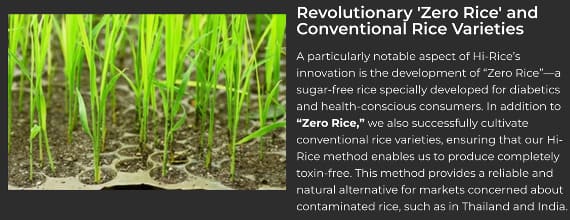The challenges associated with traditional rice farming methods, especially the flooding technique, are indeed significant, particularly in terms of environmental damage, heavy reliance on chemical fertilizers and pesticides, and water scarcity. The Pot Method you highlighted offers an innovative solution that could potentially overcome many of these issues. Here’s a detailed analysis of this method, including a recommendation considering your points.
Analysis of the Pot Method
Advantages:
- Resource Efficiency: With minimal water usage and the use of natural fertilizers from local waste, this system is especially beneficial in areas facing water scarcity and limited resources.
- Eco-Friendliness: Avoiding chemical fertilizers and pesticides reduces environmental impact and promotes healthier biodiversity.
- Contamination Prevention: Growing in isolated pots minimizes the risk of soil contamination, leading to purer, organic rice.
- Simple Technology: Systems like the Gardena hose system are easy to install and maintain, lowering the technical barrier for farmers.
- Market Acceptance: Given the economic and environmental problems with traditional methods, the Pot System is likely to find quick acceptance, especially if it offers economic benefits.

Disadvantages:
- Initial Investments: Though cost-effective in the long run, the initial setup costs for the Pot System could pose a challenge for some farmers.
- Scalability: The method needs to be adapted to be efficient on large scales, which could be a hurdle in the early stages.
- Training and Reskilling: Farmers need to be trained in the new technology, which initially requires additional resources.
Recommendation
Short-term: Pilot projects should be conducted in various regions to demonstrate the practical viability and economic profitability of the Pot Method. These projects could be supported by subsidies or partnerships with NGOs and governments to minimize initial hurdles.
Long-term: Broader adoption of the Pot Method could be encouraged through ongoing technical support and the creation of incentives for transitioning to more sustainable practices. Educational programs could help increase acceptance among farmers and maximize the efficiency of the method.
Conclusion
Considering the global challenges in rice cultivation and the need to promote sustainable and environmentally friendly farming methods, Michael Blatter’s Pot Method presents a compelling alternative to traditional flooding methods. It effectively addresses issues of water scarcity, chemical dependency, and soil contamination, and could thus make a significant contribution to producing pure, organic rice.



